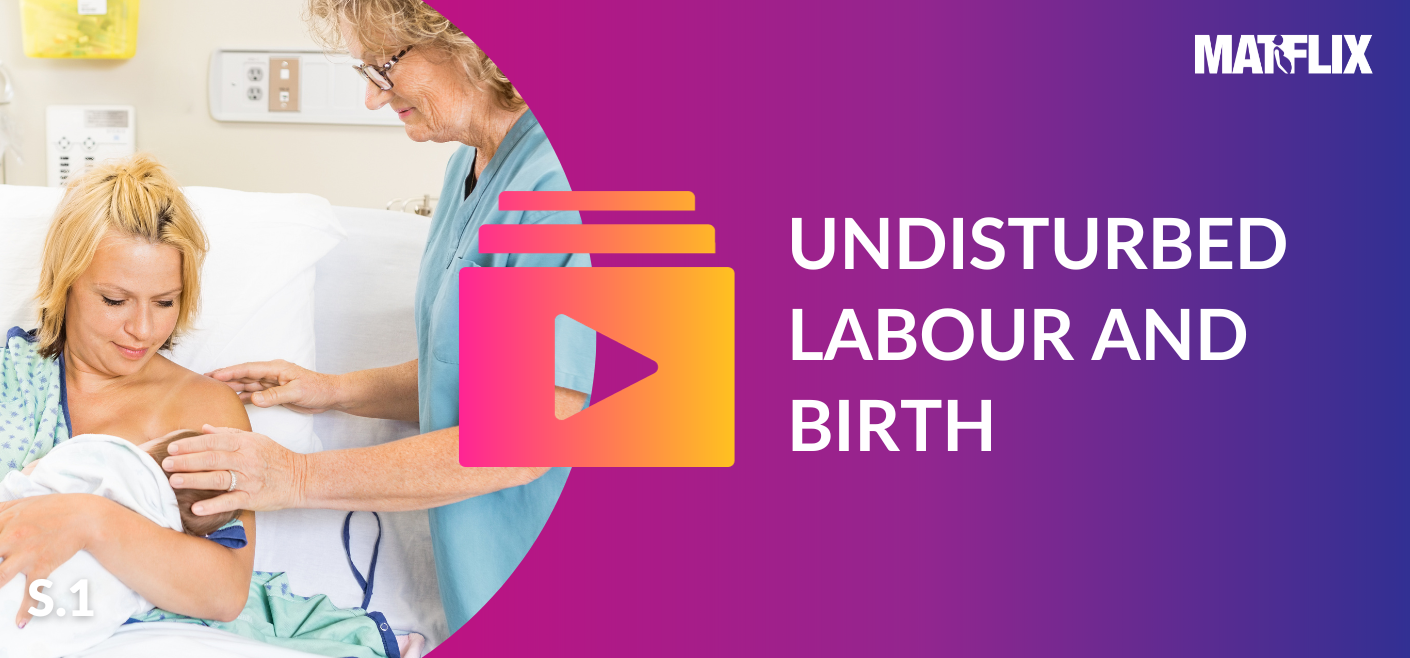UNDISTURBED LABOUR AND BIRTH
5 Talks

5 Talks
In recent years the use of medical intervention and technology around pregnancy and birth has been increasing. As a result, straightforward birth has been reducing. These talks highlight a number of reasons why this is occurring and what practical things midwives can do to support women having a straightforward labour.

Where are we going? Promoting normality versus over-using technology
2020 | 32 mins | Undisturbed Labour and Birth
Prof Cecily Begley, Chair of Nursing and Midwifery at Trinity College, Dublin, talks about the increase of the use of technology in childbirth globally and particularly in Ireland. She sets out the risks globally of caesarean section (CS) to women and babies, both for planned and unplanned circumstances. Demonstrating with evidence, the ways to reduce the CS rate are discussed. Cecily asks the question where Ireland wants birth to be in 20 years. The talk concludes with responses to questions.
Professor Cecily Begley, Chair of Nursing and Midwifery, Trinity College, Dublin

Thinking about labour through the glasses of normality
2015 | 29 mins | Undisturbed Labour and Birth
In this talk Dianne Garland, Midwifery Consultant reflects on her journey of midwifery in this country and abroad. She talks about the importance of language used around labour and birth and raises the concern of the Kirkup Morecambe bay report that we should not be aiming for “normality at all costs”. She suggests undisturbed gentle birth practices, that can be used in all environments including in complicated high technology areas and asks why this happens in other country but not ours. Dianne points to the importance of working with physiology, stating labour should be spontaneous. She raises the importance of optimal cord clamping contact between mother baby and skin-to-skin to help breastfeeding. Issues around the birth environment and mobility are also raised.
Dianne Garland, Midwifery Consultant

Factors promoting or inhibiting normal birth
2019 | 20 mins | Undisturbed Labour and Birth
Yvette Miller, Associate Professor, Queensland University of Technology, presents information around a large survey carried out in Queensland, Australia. The background to the study is described along with the methods. She explains the demographic data and models of care in Queensland. Yvette presents the different data that points to what could increase the levels of a straightforward birth.
Yvette Miller, Associate Professor, Faculty of Health, Queensland University of Technology

Three steps to creating better births
2018 | 17 mins | Undisturbed Labour and Birth
There is a reminder in this talk that facilitating birth is not just a science, based on evidence, but an art as well. Gloria Esegbona, Obstetrician and Winston Churchill Fellow, discusses the implications and challenges midwives to think about evidence differently and to avoid intervening too much when it does not fit with physiology. She explains the concepts of art, release and transforming, pointing to the importance of birth on future wellbeing of the mother and child.
Dr Gloria Esegbona, Obstetrician & Gynaecologist, Winston Churchill Fellow 2015, King’s College Learning Institute

Normal birth: What’s going on?
2019 | 28 mins | Undisturbed Labour and Birth
In the first half of the talk Soo Downe, Professor in Midwifery Studies, University of Central Lancaster, presents global data on interventions and safety around birth and the concerns of care that is “too much too soon, too little too late”. She expresses concern at overdiagnoses around maternity care, and the implications of doing things we don’t know what harm they will cause, when we know what we can do to improve care. Evidence is presented pointing to companionship- not induction. Soo presents a story from India where adding midwifery care reduced the caesarean rate in a country with high maternal deaths Concerns regarding the use of lithotomy is expressed.
Sheena Byrom, director for All4Maternity, points out that more respectful care is wanted by women and there is a need for moving towards a humanised model where we need to change the conversation. She presents their book that aims to help women and midwives to face the fear around birth and move back to physiology.
Soo Downe, Professor of Midwifery Studies, co-Director, THRIVE Centre, School of Nursing and Midwifery, University of Central Lancaster
Sheena Byrom, Midwife and Director, All4Maternity
United Kingdom and Republic of Ireland | Registration Number 8390093.
Copyright © 2024 MATFLIX